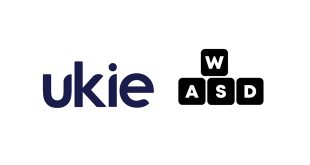The headline news from games retail in 2016 is much the same as the year before – less money was made from video games software and hardware sales, but peripherals and accessories remain an area of growth.
According to GfK Entertainment, 1.78bn was made from boxed games, hardware sales (not TV consoles such as NES Classic), and peripherals and accessories – a dip of 15.8 per cent year-on-year.
776m was generated in software sales for the year – a decline of 16.4 per cent on 2015’s 927.7m. 2016 saw a number of titles, especially in the final quarter of the year, failing to hit expectations or match the results of their predecessors. Of course, this data does not include digital sales data. Estimates from research firm IHS – courtesyof ERA – report growth of 12.1 per cent on that front.
Meanwhile, hardware revenue dropped by 27.1 per cent to 502.9m. While this sounds like rather bleak news, this is in part driven by price drops of PlayStation 4 and Xbox One consoles during the year. This was especially true in the second half of 2016, when both Sony and Microsoft released new, slimmer SKUs of their consoles, alongside price cuts of the original models.
On the software side of things, PS4 and Xbox One games now make up 79.1 per cent of retail software sales and are behind 84.5 per cent of revenue.
655.7m was generated by PlayStation 4 and Xbox One games during 2016, a dip on 2015 where the duo generated more than 700m.
PS4 was once again the dominant platform, claiming 48.2 per cent of software revenue and 45 per cent of units sold.
It’s brighter news on the accessories and peripherals side of things. Revenue from this sector – which includes digital cards, toys-to-life figures and accessories, including PlayStation VR – rose by 1.1 per cent for the year to 500.8m.
2016 was a slightly stronger year for new IP, with four fresh titles making the Top 50. Two new IPs made it in the Top Ten – Ubisoft’s The Division charted at No.4, ahead of Overwatch, which came in at ninth place. The boxed version of No Man’s Sky placed at No.29, while another new Ubisoft IP – Steep – charted at No.45.
EA was once again the highest-performing publisher of the year with a 22.1 per cent share of software sales and a 26.1 per cent slice of revenue. This is a slight increase on both fronts from 2015, likely due to strong sales of Battlefield 1 and, of course, FIFA 17.
Ubisoft came in at No.3. Looking at the Top 50, this appears to have been driven by strong sales of The Division, as well as Watch Dogs 2 which charted at No.8.
One of the biggest challenges has been the decline in PS3 and Xbox 360 software. Market share for Xbox 360 games fell from 12.5 per cent to just 5.2 per cent, with revenue share dropping from 9.0 per cent to 3.3 per cent. Meanwhile, PS3 share dropped from 7.1 per cent to 2.9 per cent, with revenue halving from 4.9 to 1.8 per cent.
There’s some good news in the 3DS sales data – the handheld saw a 2.3 per cent rise in unit market share, while revenue share rose to 6.0 per cent. This is particularly impressive for a console in the final days of its cycle. This positive shift will no doubt have been driven by the massive popularity of smartphone title Pokmon Go, and the subsequent launch of Pokmon Sun and Moon in November. This helped Nintendo’s software market share increase, too.

 MCV/DEVELOP News, events, research and jobs from the games industry
MCV/DEVELOP News, events, research and jobs from the games industry



